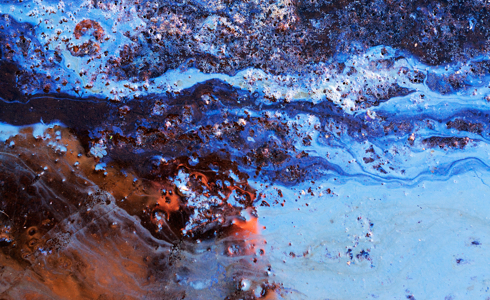On Today's Podcast
The Science Of Thriving In Winter—By Embracing It
In a conversation from January, a psychologist and author of “How To Winter” explains what we can learn from people thriving in the coldest parts of the world.
Listen NowDecember 19, 2025
A newly identified amoeba can survive at the temperature of a medium-well steak. Plus, a distant lava planet shows signs of an atmosphere. And, this Christmas Bird Count, we salute the fabulous, underappreciated, common species. Here’s to you, house sparrow.
15:39
Balancing Surveillance: Privacy and Security in the Digital Age
Is it possible to keep our personal information secure in the digital age?
0:39
Mysteries of the Mars Plume
Wayne Jaeschke, a patent attorney and amateur astronomer, captured a photo of a wispy cloud rising 120 miles into the Martian atmosphere.
Step Inside A Mad Scientist’s Lab
Take a video tour of the California-based prop shop Jadis, where technological curiosities both real and imagined intermingle.
The Man Who Froze Snowflakes In Time
Wilson Bentley brought the beauty of snow crystals to the public using a technique called photomicrography.
Why Do I See This Dress as Blue and Black, While Others See It As White and Gold?
A combination of color and white balance, exposure, and computer displays likely play a role, as well as our own physical perception.
In Memory of Leonard Nimoy
The Star Trek actor died on February 27, 2015. He spoke to SciFri about science fiction in this archival interview.
11:48
Airport Apiaries, Now Boarding
Several major airports have found a new use for open but restricted space alongside runways and hangars—as a home for beehives.
17:17
Which Scientific Ideas Must Die?
“This Idea Must Die” asks scientists and big thinkers which scientific theories they’d target for extinction.
8:53
Apps That Judge What’s on Your Plate
A new class of food-coaching apps connects you to pros and peers who offer tips on healthy eating, based on descriptions and photos of what you eat.
7:34
Dawn of the Cyborg Bacteria
In a basement laboratory at the University of Pennsylvania, two roboticists have harnessed the sensing, swimming, and swarming abilities of bacteria to power microscopic robots.
12:17
NASA and Integration During the Civil Rights Movement
As part of Black History Month, Science Friday looks at the role of African-American scientists at NASA during the Civil Rights era.
17:20
Future Crimes: The Next Generation of Security Threats
In “Future Crimes,” author Marc Goodman looks at how criminals are using emergent technology for their own benefit.
16:46
After Decades of Dietary Warnings, Eggs Make a Comeback
After decades of warnings, the advisory committee behind the U.S. government’s dietary guidelines drops its prohibition on cholesterol.
The Hidden Beauty Of The Human Placenta
Though discarded after birth, the placenta builds the first vital connection between mother and fetus.
Should These Scientific Ideas Be Retired?
Two scientists consider the concepts of the universe and falsifiability.
Dawn of the Cyborg Bacteria
In a basement laboratory at the University of Pennsylvania, two robotocists have harnessed the sensing, swimming, and swarming abilities of bacteria to power microscopic robots.
How Can We Clean Up an Oil Spill?
In this activity from the American Association of Chemistry Teachers, students simulate an oil spill and test different materials’ abilities to “clean” the oil spill.
12:07
Legal Battle Ends, But Seas Continue to Rise in Kivalina, Alaska
With its legal battle over, Kivalina, Alaska struggles to relocate a 400-person village predicted to be underwater by 2025.


